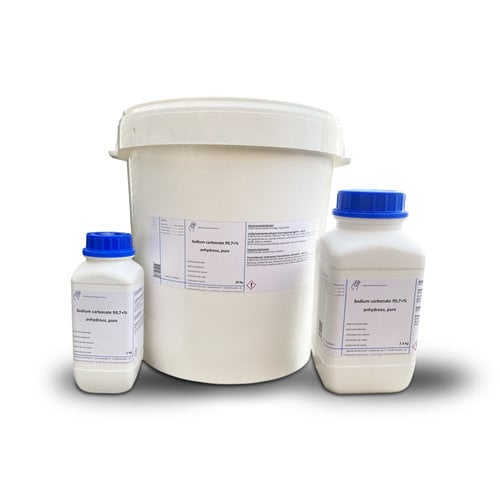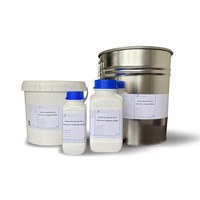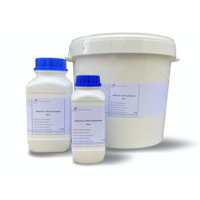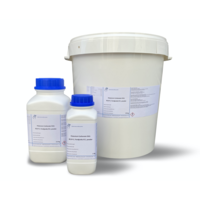You have no items in your shopping cart
Sodium carbonate 99.7 +%, pure
- Buy 2 and save 10%
What is Sodium Carbonate?
Sodium carbonate, Na2CO3, also called anhydrous calcined soda, pure soda or washing soda, is a salt of carbonic acid.
What is Sodium Carbonate used for?
Sodium carbonate has been used by humans for a long time. Even the ancient Egyptians used it for mummification ("Nitron"). It has also been used since ancient times as a cleaning agent and in glass production. Today, soda ash is used by almost all branches of industry, making it one of the most versatile chemical products.
Sodium carbonates are used in food technology as a leavening agent, acidity regulator or carrier, for example in baking powder. They are generally approved in the EU as a food additive with the number E 500 without limitation of the maximum amount (quantum satis) for all foods and may also be added to organically produced food according to EC organic regulations. (Please note that this variant is not food grade)
In 1997, approximately 39 million tons of Sodium Carbonate were produced worldwide. In Germany, the market volume in 1999 was about 2.4 million tonnes. Most of Sodium Carbonate is consumed by the following five industrial sectors:
-The glass industry uses soda as a raw material for glass melting and is therefore the largest consumer of soda. Soda acts as a flux, preventing it from crystallizing in the solidifying glass melt, leaving the glass amorphous. The proportion of soda determines the fluidity of the melt.
-The chemical industry uses soda for the production of bleaches, borax, chromates such as sodium chromate and sodium dichromate, paints, fillers, tannery aids, industrial cleaners, cryolite, glues and adhesives, metal carbonates, sodium nitrate, perborate, sodium phosphates such as pentasodium triphosphate, silicates (water glasses) such as for example, sodium metasilicate pentahydrate and sodium orthosilicate, sulfite, ultramarine colors, water glass and the like.
-In the iron and steel industry, soda is used to desulphurize pig iron, cast iron and steel and as a flotation and fluxing agent.
-In the laundry and soap industry, coarse detergents and other cleaning agents are produced with soda and fats are saponified. In the past, soda was made caustic for this purpose; reacted with calcium oxide or hydroxide to form caustic soda.
-In the paper and pulp industry soda is used for fermentation, neutralization, cleaning and bleaching and for the processing of waste paper.
Other uses:
Leather industry
Water Purification
Internal feed water treatment in steam boilers
Bakery production
Manufacture of ceramics and enamel
Textile industry
Flue gas desulphurization
Primary titre substance according to pharmacopoeia
Nerve gas detoxification
Increasing the pH value of drinking water and in swimming pools ("pH plus powder" and
granules are usually sodium carbonate)
Addition to developer solutions
Buy sodium carbonate?
Buy high purity sodium carbonate at Laboratoriumdiscounter.nl. Delivered quickly and always with volume discount. Of European quality and available in different packaging.
Technical data
Anhydrous soda
Empirical formula Na2CO3
Molar mass (M) 105,99 g/mol
Density (D) 2,532 g/cm³
Melting point (mp) 851 °C
WGK 1
CAS No. 497-19-8
EG-Nr. 207-838-8
Downloads
$$$$$
Hazard statements
H319 Causes serious eye irritation
Precautions - response
P305 + P351 + P338 IF IN EYES: Rinse cautiously with water for a long period of time
amount of minutes; remove contact lenses, if possible; keep rinsing.
P337 + P313 If eye irritation persists: Get medical advice / attention.










